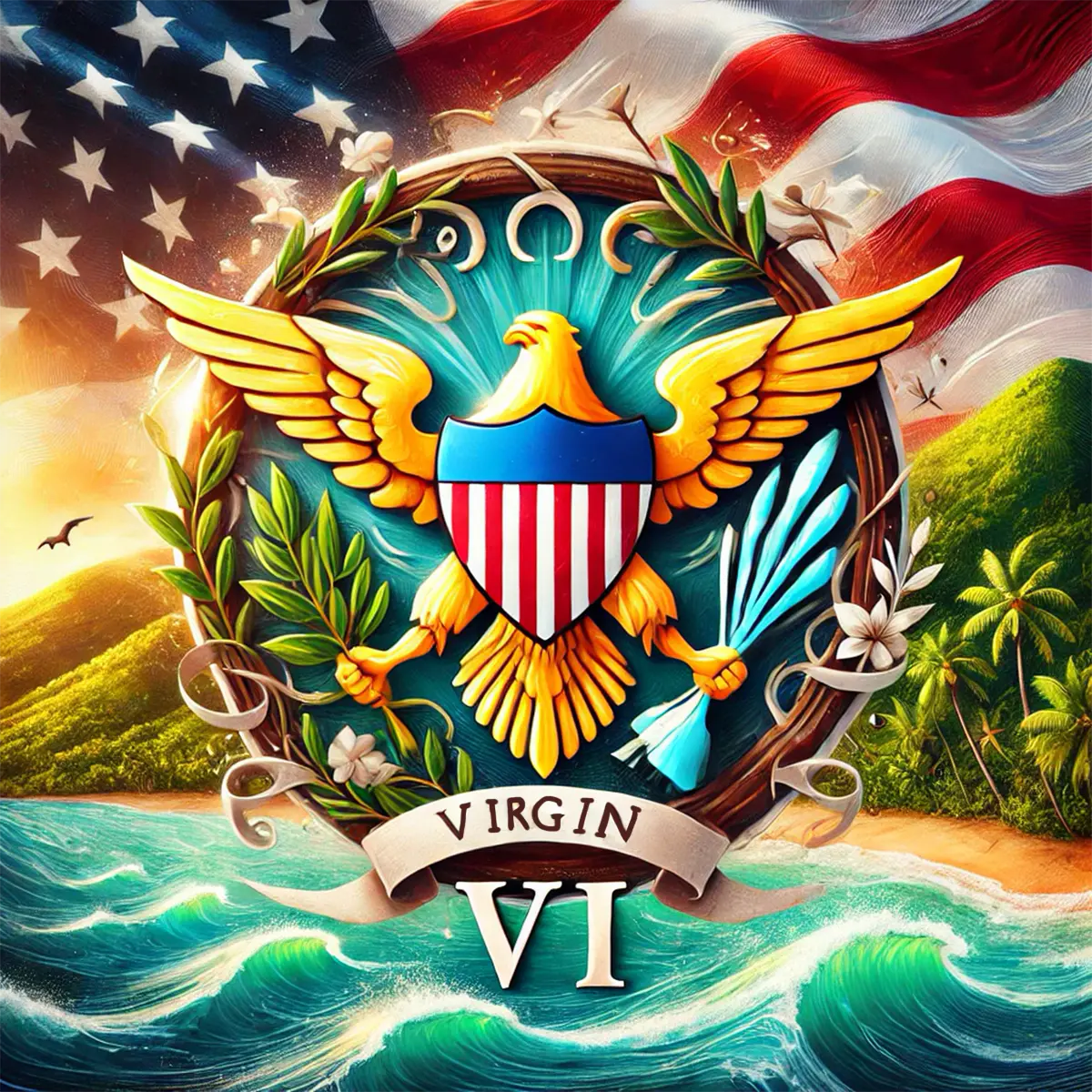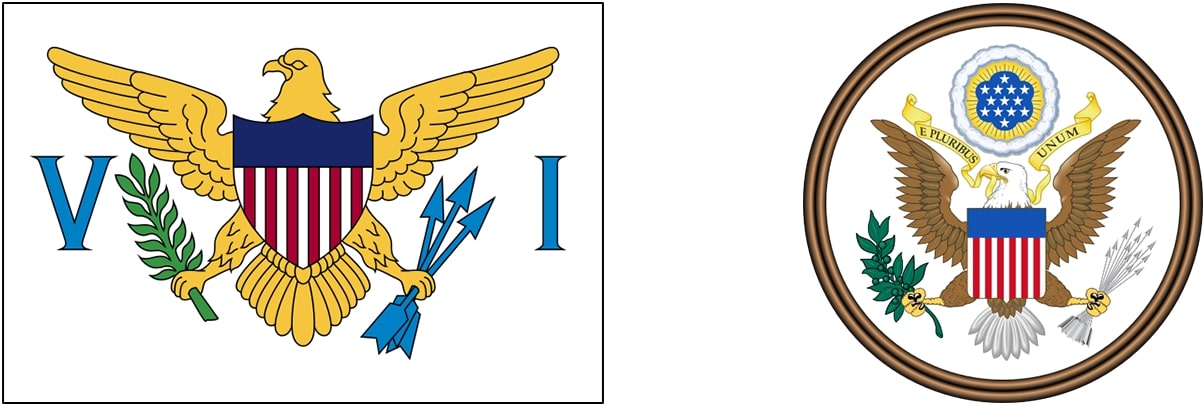The flag of the U.S. Virgin Islands was adopted on May 17, 1921. It is a white cloth with a simplified version of the coat of arms of the United States of America, so it looks more like a coat of arms than a flag. In the center is a golden American eagle holding a sprig of green laurel in one talon and three arrows in the other; on the chest, the shield is divided into two parts: the upper one is blue, and the lower one consists of 13 stripes of red and white, as on the US flag. The eagle is placed between the letters "V" and "I".



